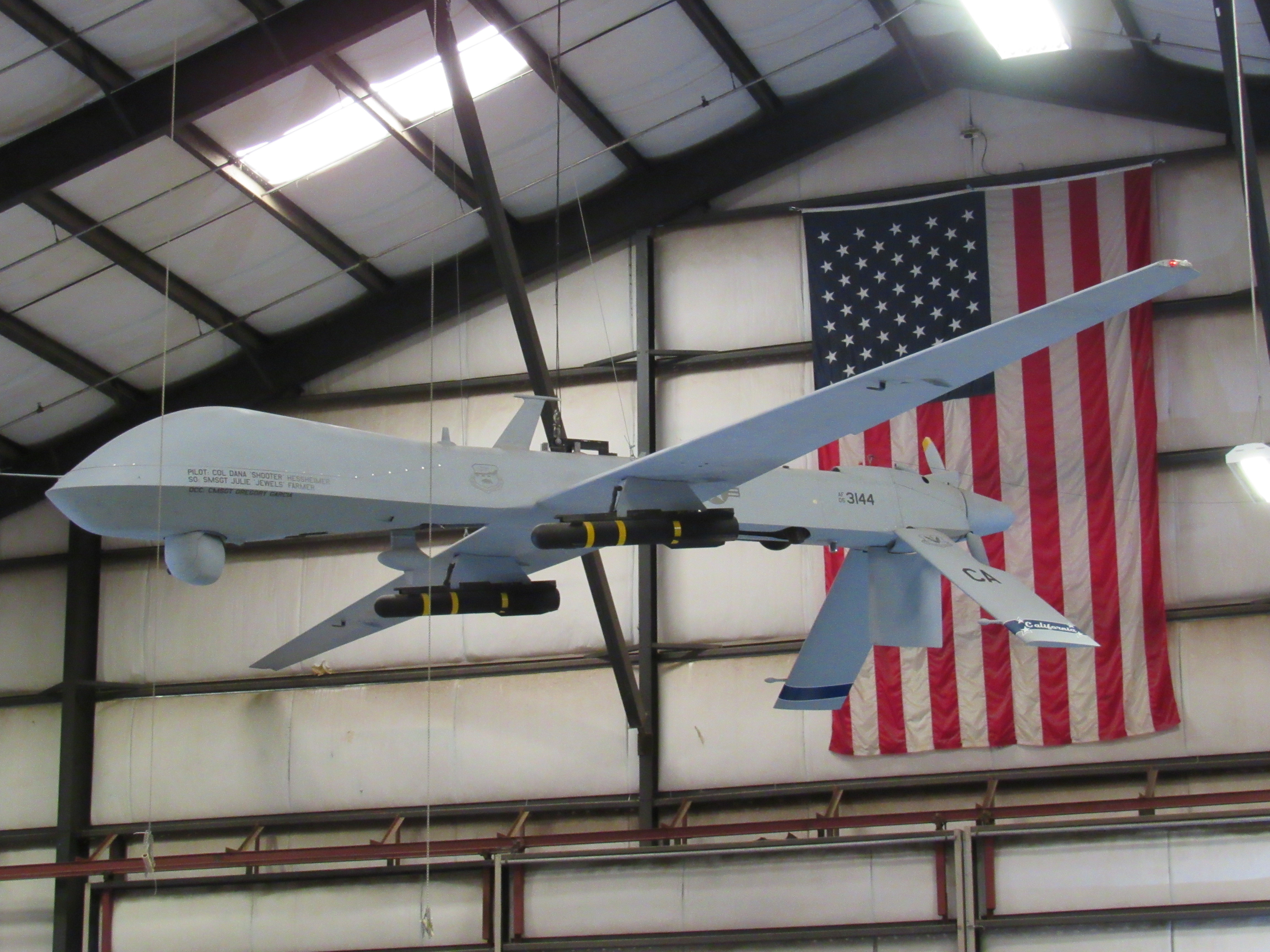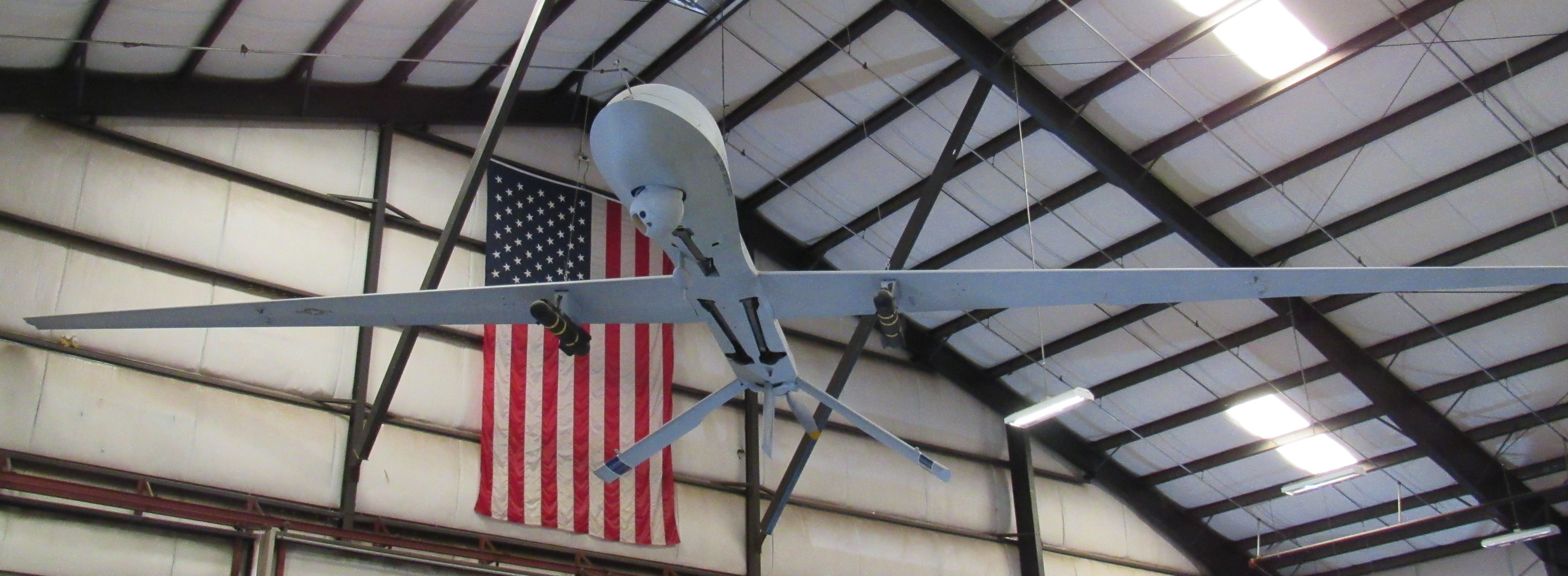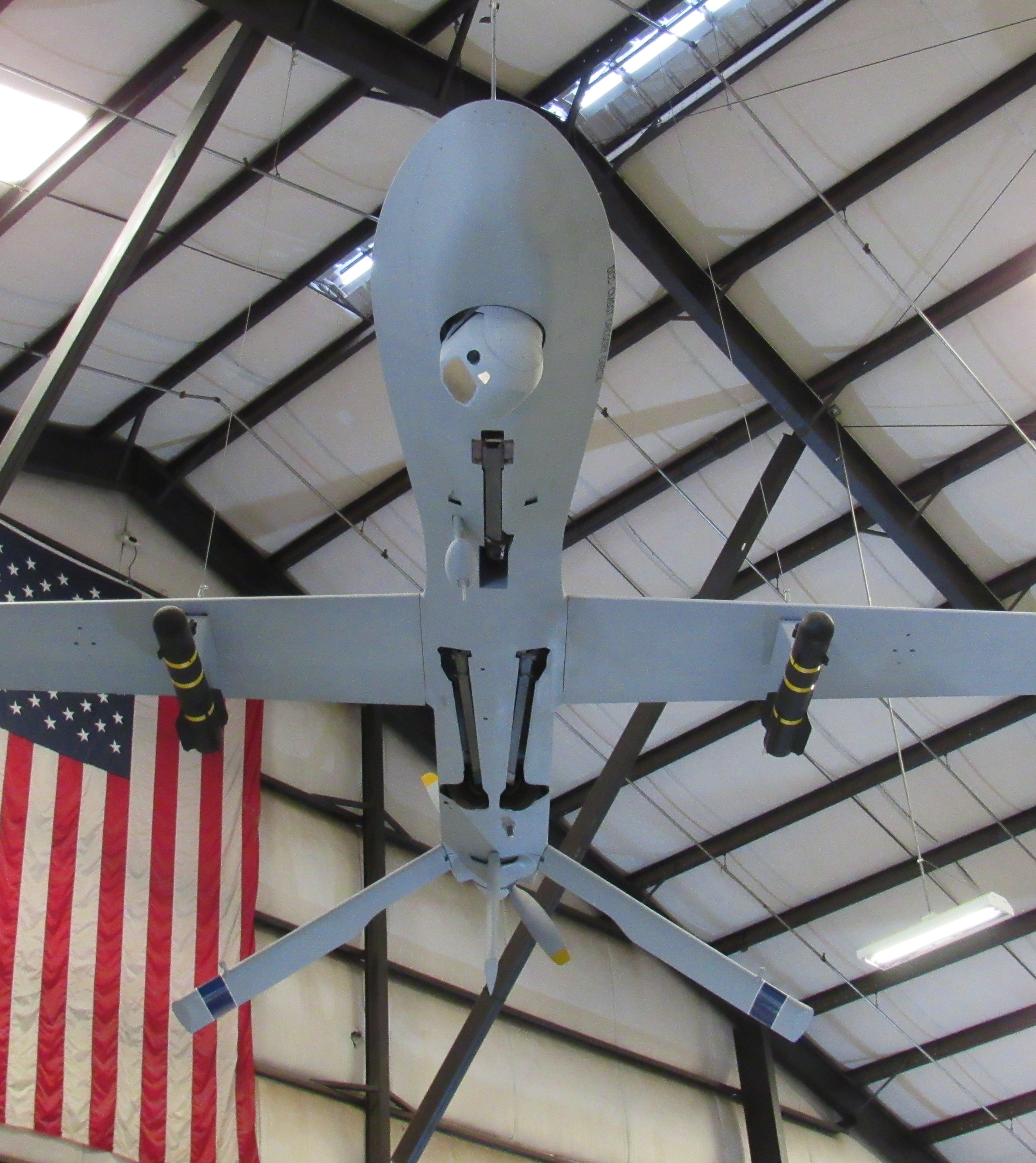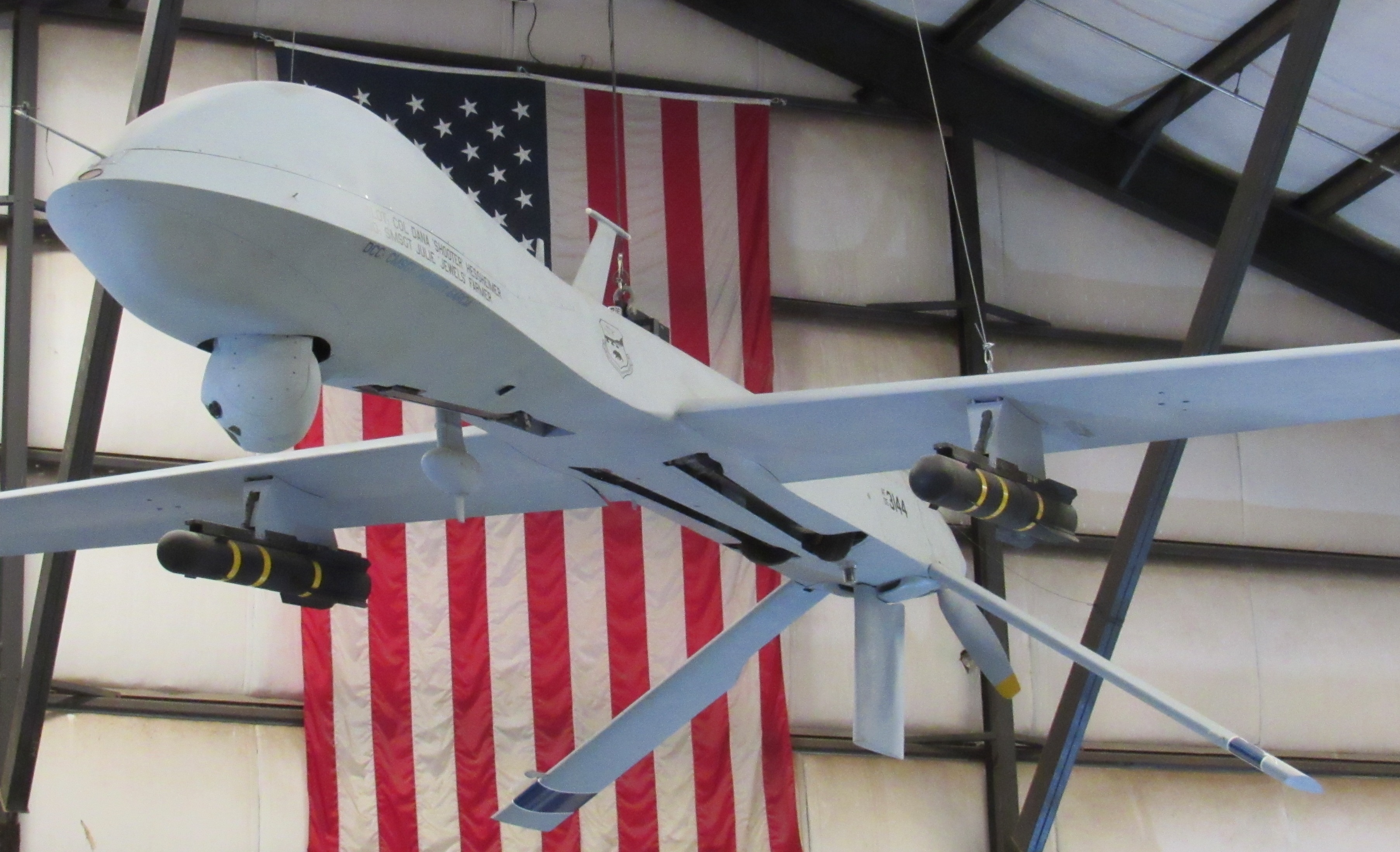
The March Field Air Museum has an MQ-1B Predator on static display. A few pictures of the drone for your viewing pleasure:

Narrative on the placard:
The future of air warfare
MQ-1B Predator
Harbinger of a new age of aviation the MQ-1B Predator is a high-endurance, medium altitude remotely piloted aircraft built by general Atomics Or an article Systems Inc. of Poway California. Widely used by the United States Government, several federal agencies have operated the Predator including the United States Air Force, the Central Intelligence Agency and the Department of Homeland Security.
The single-engine, low-wing mono-plane, is flown by a fully-qualified aircraft pilot in collaboration with a sensor/weapons operator, both are located in Ground Control Station connected electronically to the aircraft by sophisticated data links and/or satellite. This capability permits the aircrew to operate the aircraft from thousands of miles away, far from any physical danger.
The predator carries a Multi-– Spectral Targeting System which integrates an infrared sensor, color/monochrome daylight TV camera, image-intensified TV camera, a laser designator and laser illuminator. Though initially designed as a surveillance platform equipped only to gather intelligence, the Predator has been modified to carry two supersonic AGM-114 Hellfire air-to-ground missiles. Equipped with a relatively quiet engine, the addition of the supersonic air-to-ground missiles permit the aircraft to strike high-value target without warning thereby minimizing their opportunity to escape. Since 1995, Predators have seen combat in Afghanistan, Pakistan, Bosnia, Serbia, Iraq, Yemen, Libya, and Syria and Somalia.
Select data listed on the placard:
Designation: MQ-1B Predator
Length: 27’
Height: 7’
Wingspan: 55’
Gross weight: 2,250 pounds takeoff weight
Number of engines: 1
Performance
Range: 770 miles
Cruise speed: 84 miles per hour
Max speed: 135 miles per hour
Ceiling: 25,000 feet



